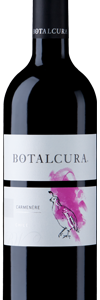Innovative and bold, this wine, whose name was inspired by the bougainvillea flowers that grow at the Santa Rita manor house, is not only made with a variety that is nearly unknown in Chile, but also disproves the theory that the Maipo Valley only produces Cabernet Sauvignon and demonstrates that it is ideal for producing high-end wines from other varieties as well. This is thanks to the vision of Andrés Ilabaca and his enological team and their years of work to discover the best conditions for making a superior wine with the best expression of Chilean terroir.
Vintage report
The 2009 to 2010 season began with a cold spring that included frosts that affected the lower sectors of the vineyards in Alto Jahuel, which compromised the primary buds. Those that were not affected, however, along with the secondary buds, sprouted uniformly after a 10–15-day delay. Flowering was normal and fruit set was good, with no shatter or coloure. Vine growth stopped early and veraison was somewhat late in relation to a normal year. The grapes were picked in late April.
Climate & soil characteristics
The Maipo Valley has a sub-humid Mediterranean climate, with approximately 400 mm of precipitation per year, primarily during the winter months. Summers are hot and dry with more than 20ºC of oscillation between the daytime high and nighttime low temperatures on a single day due to the cold air currents from the Andes Mountains.
Vineyards characteristics
The Petite Sirah vineyard is just two hectares and consists of vines grafted onto pergola
15 years ago. The loam soil has a layer of clay that retains moisture and another of stones that facilitates drainage, which means the vineyard is not very dependent on external irrigation. The density is 400 plants per hectare. The vines have hard shoots that grow vertically and form an open, well-ventilated, well-illuminated canopy. The vineyard is normally irrigated just once following veraison; this way the vegetative growth stops and the vine concentrates on ripening the grape bunches. Yield is 7–8 tons per hectare.
Vinification
The wine was vinified by traditional methods in stainless steel tanks with cold maceration prior to fermentation. The first stage of the extraction began at the highest range of temperatures, which were lowered toward the end to preserve the fruitiness of the variety. Upon completion of alcoholic fermentation, the new wine remained on its skins for a post-fermentation maceration followed by 18–19 months of aging in new, medium-toast French oak barrels from different cooperages (Dargaud, Sylvain, and Taransaud) and origins (Nevers and Alliers). The wine was returned to the stainless steel tanks to rest for two months prior to bottling.









